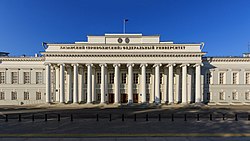《沙特文學論》劉大悲譯,1980 ,60元
《沙特隨筆》張靜二譯,1980 ,60元
美國的機關更厲害 沙特二戰間訪美 到某造船廠 他們要訪客錄音 隔天播放給全廠員工聽 士氣可大振 參考
沙特隨筆著 張靜二譯│志文│
此君寫的美國六周 說了解美國需10年以上 不過他對"個人主義的一致性"和"明顯的理性"觀察頗多 (我1993年與陳巨擘先生訪美 陳跟我說美國許多工具等等 很考慮人性或方便 這一趟還買了一本 HERBERT A SIMON的 MODELS OF MY LIFE 我似乎被電到....)
沙特隨筆 張靜二譯│Taipei: 志文,1980
生活·境遇:萨特言谈、随笔集 .:平装18cm / 297页; 【出版项】:三联书店上海分店 / 1990.2,1996.6重印 ..此書有抄襲張之翻譯之嫌不過妙的是改錯了 將農神 Saturn 翻譯成 Satan
《波法利夫人》兩譯本:
《波法利夫人》胡品清譯,1978/1987,170元
《波法利夫人》蕭逢年重譯,2003,300元
6月21日
沙特(Jean-Paul Charles Aymard Sartre)
(西元1905.6.21—1980.4.15)
法國哲學家及作家。存在主義哲學的大師,提倡激進的自由意志主義。於二戰期間投身反抗運動。代表作《存在與虛無》被視為法國存在主義運動的奠基之作。另有長篇小說《自由之路》等作品。
作家唯一的機會只出現在自己的時代中。時代為了作家而延續,作家也為了時代而誕生。很遺憾地,巴爾札克對四十八年事變(二月革命)毫不關心,福樓拜也不了解巴黎公社且戰戰兢兢,而我是為他們而感到遺憾。因為,他們已經在各自的時代中,永遠失去了某些東西。我們不想在我們的時代中失去任何東西。未來或許會出現更美好的時代,但此刻是屬於我們的時代。我們身處這場戰爭,恐怕該稱為這場革命中,必須、也只能為了活出這段人生而挺身奮鬥。
節自 評論雜誌《現代》之創刊辭
----
Jean-Paul Sartre, a Marxist existentialist philosopher and writer who won the Nobel Prize for Literature, described the trial as
---
《無所不談》有兩篇關於法國明星 Brigitte Bardot (碧姬芭杜):、〈論碧姬芭杜的頭髮〉。
林語堂是/屬大師級,〈從碧姬芭杜小姐說起〉一文,碧姬芭杜是引言,主要開始介紹存在主義大師沙特 (林譯:薩爾忒Jean-Paul Sartre,接下專篇〈說薩爾忒〉
Oct. 22, 1964 - The Nobel Prize for Literature was awarded today to Jean‐Paul Sartre (pictured), who promptly refused the honor and the $53,000 that accompanies it.
The 59‐year‐old French writer, philosopher, and exponent of existentialism took time out from luncheon in a Paris bistro to issue his refusal.
In a statement, Sartre said a writer must not accept official awards because to do so would add the influence of the institution that honored his work to the power of his pen. That is not fair to the reader, he said.
Sartre had forewarned the Swedish Academy, which makes the literature award, that he did not want it. Nevertheless, the academy members felt he was the only possible recipient this year.
He is the first to turn down the award fully and freely.
In 1925, George Bernard Shaw rejected the prize and then changed his mind, with the money going toward the translating of Swedish literature. Boris Pasternak refused the 1953 award under Soviet pressure.
The academy’s secretary, Karl Gierow, said: “If Sartre does not collect the prize, the money will be returned to the Nobel Prize funds. The academy’s award is not guided by the possible winner’s wishes but only by the decision of the academy’s 18 members.”
Sartre’s first work was a novel published in 1938 and called “Nausea.” He has since written a number of novels, plays, and philosophical works as well as a vast number of journalistic articles.
His book “Being and Nothingness” summarized the ideas behind existentialism in these words:
“Man can will nothing unless he has first understood that he must count on no one but himself; that he is alone, abandoned on earth in the midst of his infinite responsibilities; without help; with no other aim than the one he sets himself, with no other destiny than the one he forges for himself on this earth.”
For the existentialist, God does not exist, and the world is just a phenomenon without any meaning other than what man may attach to it. Man is always faced with the responsibility of choice between good and evil, and man makes that choice not only for himself but for all humanity.
Sartre has taken a vigorous part in many contemporary controversies. He has dealt with the American civil rights problem, what he considers to be unnecessary fears of Communism, French treatment of Algerian freedom fighters, and West German prosperity.
Support this project at patreon.com/realtime1960s


 The Kazan Kremlin, where Mr. Putin received the visiting leaders. Security was heavy in the city on Tuesday.Credit...Maxim Shemetov/Reuters
The Kazan Kremlin, where Mr. Putin received the visiting leaders. Security was heavy in the city on Tuesday.Credit...Maxim Shemetov/Reuters








